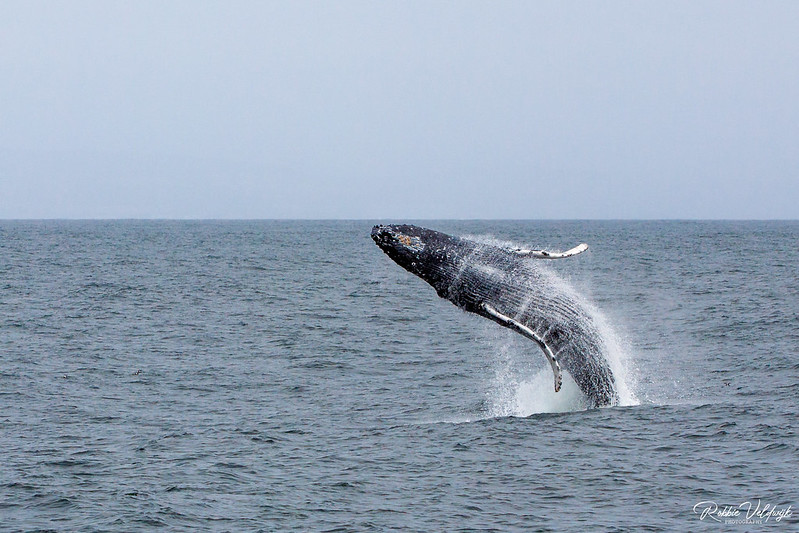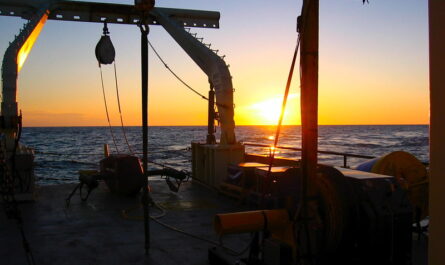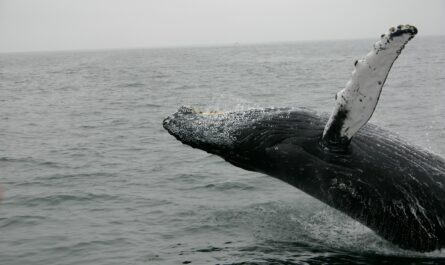The humpback whale (Megaptera novaeangliae) is one of the most awe-inspiring creatures of the sea. Known for its distinctive body shape, long pectoral fins, and captivating songs, the humpback whale captivates both scientists and marine enthusiasts alike. In the North Atlantic, these majestic mammals embark on one of the longest migrations in the animal kingdom, traveling thousands of miles from their feeding grounds in the colder northern waters to the warmer, tropical seas where they breed and give birth. While their migratory patterns are a natural wonder, the humpback whale population faces numerous challenges from human activities and environmental changes. Understanding these migration patterns and addressing conservation needs is critical to ensuring the long-term survival of this remarkable species.
The Humpback Whale: An Iconic Marine Mammal
Humpback whales are easily recognized by their stocky bodies, which can grow up to 60 feet in length and weigh as much as 40 tons. They have knobby heads covered in tubercles (hair follicles), long flippers that can extend nearly a third of their body length, and powerful tails, or flukes, that propel them through the water. Their name derives from their distinctive habit of arching their backs before diving deep into the ocean.
However, it’s not just their physical appearance that makes humpbacks stand out. These whales are famous for their vocalizations, often referred to as “whale songs.” Male humpbacks produce complex songs that can last for hours and travel over vast distances. These songs are thought to play a role in mating, though their exact function remains a subject of scientific study.
Humpback whales are found in oceans all over the world, but the North Atlantic population is particularly notable for its migratory behavior. These whales migrate annually between high-latitude feeding grounds and low-latitude breeding grounds, a journey that can span up to 5,000 miles.
Migration Patterns of Humpback Whales in the North Atlantic
The North Atlantic humpback whale population migrates between two key regions: the feeding grounds in the cooler northern waters of the Arctic and sub-Arctic, and the breeding grounds in the warmer waters of the Caribbean and West Africa.
Feeding Grounds
In the summer months, humpback whales can be found in the nutrient-rich waters of the North Atlantic, from the Gulf of Maine and the waters off Newfoundland and Labrador to the coasts of Greenland, Iceland, and Norway. These areas are rich in krill, small fish (such as herring and mackerel), and other prey, which the whales consume in massive quantities to build up their energy reserves for the long migration south.
Humpback whales are baleen whales, meaning they have plates of baleen (a comb-like structure) in their mouths instead of teeth. They feed by using a method called “bubble-net feeding,” where a group of whales cooperatively traps schools of fish by blowing bubbles in a circular pattern around their prey. The fish are then corralled into a tight ball, making it easier for the whales to swim up and consume them in large gulps. This coordinated feeding technique is a spectacular sight to behold and is a testament to the humpback’s intelligence and complex social behaviors.
Breeding Grounds
As autumn approaches and the days grow shorter, humpback whales begin their long migration south to the warmer tropical waters of the Caribbean, particularly around the Dominican Republic’s Silver Bank, Puerto Rico, and the Cape Verde Islands off the coast of West Africa. These breeding grounds are safe, shallow waters where the whales mate and give birth. The warmer temperatures of these regions are critical for the survival of newborn calves, which lack the thick layer of blubber that insulates adult whales in colder waters.
Female humpback whales typically give birth to a single calf every two to three years, after a gestation period of about 11 to 12 months. The newborn calves are around 12 to 15 feet long at birth and weigh approximately one ton. They rely on their mothers’ milk for the first six months of life, after which they begin to accompany their mothers on the migration back to the northern feeding grounds.
The migration to breeding grounds also serves another purpose: it is a time for social interactions and courtship. Male humpback whales are known for their elaborate songs, which are believed to attract females and may play a role in mate selection. These songs change over time, with new variations introduced each breeding season, creating a dynamic and evolving vocal culture among whale populations.
The Long Migration
The migration of humpback whales in the North Atlantic is one of the most remarkable natural phenomena in the marine world. Covering thousands of miles, this journey is fraught with challenges, including food scarcity, energy depletion, and the dangers posed by human activities. Yet, humpback whales have adapted to this arduous journey over millennia, synchronizing their migration with the seasonal availability of food and the need to reproduce in safe environments.
During migration, humpback whales rely on their fat reserves, which they accumulate during the feeding season, to sustain them through the long journey. Adult whales typically lose a significant portion of their body weight during migration and the breeding season due to the lack of food available in the tropical waters. This makes their time in the northern feeding grounds critically important for their survival and reproductive success.
Conservation Challenges Facing Humpback Whales
While the North Atlantic humpback whale population has shown signs of recovery since the end of commercial whaling, these magnificent creatures still face numerous threats. Human activities, environmental changes, and global climate shifts all pose risks to humpback whales, particularly during their migration and in both feeding and breeding grounds.
Ship Strikes
One of the most significant threats to humpback whales in the North Atlantic is collisions with ships. As global shipping traffic increases, particularly along busy coastal routes, the risk of whales being struck by vessels rises. Ship strikes can cause serious injury or death to humpback whales, and the problem is exacerbated by the fact that whales often migrate through heavily trafficked waters, such as the Gulf of Maine and along the eastern seaboard of the United States.
Efforts to mitigate ship strikes have included implementing speed restrictions in areas where whales are known to congregate, developing whale alert systems for mariners, and designating shipping lanes that avoid critical whale habitats. However, continued vigilance and enforcement of these measures are needed to ensure that ship strikes do not become a growing problem as global maritime trade expands.
Entanglement in Fishing Gear
Another significant threat to humpback whales is entanglement in fishing gear, particularly in the North Atlantic’s highly productive fishing grounds. Whales can become caught in nets, lines, and other fishing equipment, leading to injury, exhaustion, and even death. Entanglement can impair a whale’s ability to swim, feed, and migrate, and in severe cases, the injuries can become infected, further threatening the whale’s life.
Conservation organizations and governments have been working to reduce the risk of entanglement by promoting the use of whale-safe fishing gear, such as ropeless traps, and by implementing regulations that limit fishing activity in areas where whales are known to frequent. In addition, rapid response teams have been established to disentangle whales when they are spotted with fishing gear attached.
Climate Change and Habitat Loss
The impact of climate change on humpback whales is a growing concern, particularly in the context of their migratory behavior and feeding patterns. Warming ocean temperatures are altering the distribution of prey species, such as krill and small fish, which are critical to the whales’ diet. This means that humpback whales may need to travel further to find sufficient food, which could affect their energy reserves and reproductive success.
Climate change is also affecting the breeding grounds of humpback whales. Rising sea levels and changing ocean currents could alter the environmental conditions in the tropical waters where humpbacks breed, potentially making these areas less suitable for calving and rearing young. Furthermore, coral bleaching and the degradation of reef systems in the Caribbean, caused by warming seas and ocean acidification, could impact the overall health of marine ecosystems that support whale populations.
Noise Pollution
Marine noise pollution from shipping, drilling, and military exercises is another growing concern for humpback whales. These whales rely on their vocalizations for communication, navigation, and mating. Increased underwater noise levels can interfere with these behaviors, leading to disorientation, stress, and a reduced ability to find mates or navigate during migration.
To address this, some governments and organizations are working to establish “quiet zones” in critical whale habitats and to develop technologies that reduce underwater noise from ships and other human activities. However, global coordination and further research are needed to fully understand the impact of noise pollution on humpback whales and to implement effective solutions.
Conservation Efforts and Future Prospects
The conservation of humpback whales in the North Atlantic is a success story in many respects, but there is still much work to be done. International treaties, such as the International Whaling Commission (IWC), have played a critical role in protecting whale populations by banning commercial whaling and setting conservation guidelines. However, enforcement and ongoing conservation efforts at national and regional levels are essential to maintain and strengthen these protections.
Organizations such as the Whale and Dolphin Conservation (WDC) and the Marine Mammal Protection Act (MMPA) in the U.S. have been instrumental in advocating for policies that protect whales from the dangers posed by human activities. These include efforts to monitor whale populations, reduce ship strikes, and minimize the impact of fishing gear entanglements.
In addition, eco-tourism has emerged as a valuable tool for both conservation and education. Whale-watching tours provide opportunities for people to experience humpback whales in their natural habitat, fostering a deeper appreciation for these creatures and raising awareness about the need for their protection. Eco-tourism also provides economic incentives for local communities to prioritize whale conservation over harmful practices.
Conclusion
Humpback whales in the North Atlantic are a marvel of nature, undertaking long migrations across vast oceans, navigating complex ecosystems, and surviving in both temperate and tropical waters. Their migration patterns, feeding techniques, and social behaviors make them one of the most fascinating marine species on Earth. However, these majestic animals face ongoing challenges from human activities and environmental changes, making conservation efforts crucial.
By understanding humpback whale migration patterns and addressing the threats they face, we can continue to protect and conserve these incredible creatures for generations to come. Through a combination of scientific research, conservation policies, and public awareness, humpback whales have a fighting chance to thrive in the North Atlantic’s ever-changing environment.



